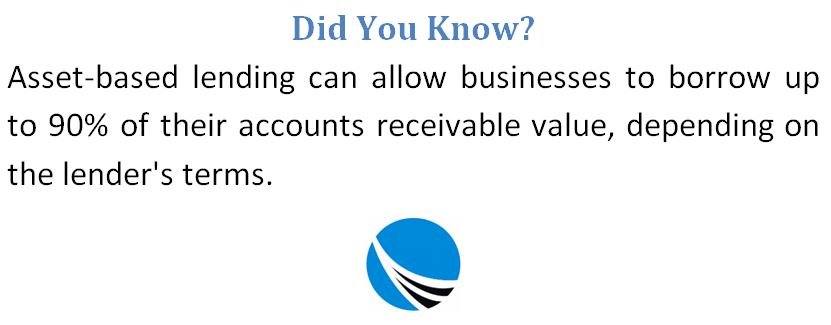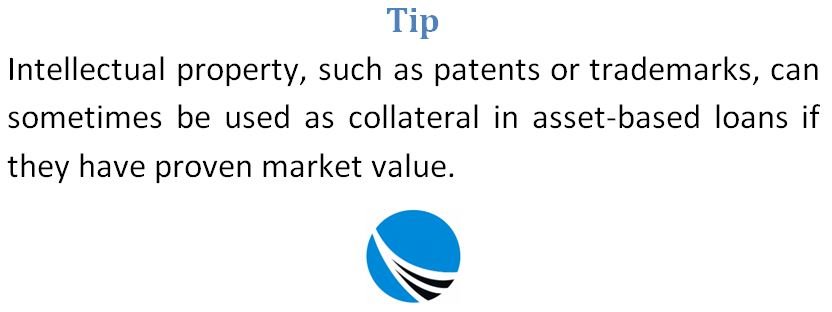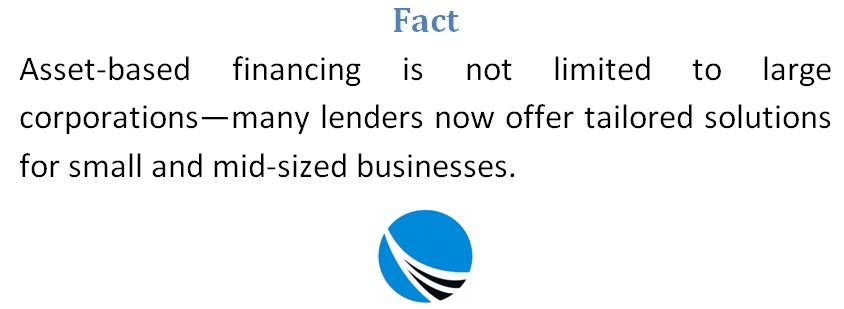Asset-based lending (ABL) is a form of secured business finance that allows companies to obtain funding by leveraging their existing assets. This approach offers an alternative for businesses that may not qualify for traditional unsecured loans or simply want to maximize the value of their balance sheet. While it opens up new opportunities for growth and liquidity, asset-based lending also requires careful consideration of your company’s financial health and the type of assets available.
This guide explores how asset-based lending works, which assets are eligible, the pros and cons of using this type of finance, and how to find the right lender for your needs.

How Asset-Based Lending Functions in Practice
At its core, asset-based lending provides a credit facility or lump sum loan that is secured by a business’s valuable holdings. The amount a business can borrow is directly tied to the appraised value of the assets they pledge as collateral.
Common arrangements include revolving lines of credit and term loans. These facilities are often used to improve working capital, fund new projects, or navigate cash flow fluctuations. Lenders perform detailed evaluations of the proposed assets to assess their condition, marketability, and depreciation. Based on this assessment, the lender offers a loan-to-value (LTV) ratio, which determines the portion of the asset’s value they’re willing to finance.
For example, if a company offers equipment worth $500,000 as collateral and the lender uses a 60% LTV ratio, the business may be approved for a loan of $300,000. The more liquid and stable the asset, the better terms a business can typically negotiate.

Types of Assets That Qualify for ABL
Almost any asset with quantifiable value and market demand can be used in asset-based lending. However, the more easily an asset can be sold in case of default, the more attractive it is to a lender.
Assets that are frequently accepted include:
- Accounts receivable: Unpaid invoices owed by customers are commonly used in invoice financing or factoring.
- Inventory: Raw materials or finished goods that have demonstrated turnover and market demand.
- Equipment and machinery: Durable goods used in operations, especially if they are in good working condition and retain value.
- Commercial property: Real estate owned by the business, including warehouses, office spaces, or factories.
- Intellectual property: In select cases, patents, trademarks, or copyrights can serve as collateral if they have verifiable market worth.
The strength of your balance sheet often determines your eligibility for asset-based loans. Lenders want to see that assets are owned outright (not already pledged), that their value is consistent, and that there’s historical proof of their liquidity.
Evaluating the Advantages of Asset-Based Lending
Businesses turn to asset-based lending for various strategic reasons. The benefits go beyond just immediate access to capital and can have lasting positive effects on operations and financial planning.
Access to Substantial Capital
Because asset-based lending is backed by tangible value, it often allows for larger funding amounts than unsecured lending would permit. This makes it especially useful for scaling operations or managing high overhead costs.
More Control over Your Business
Unlike equity financing, asset-based lending does not require giving up ownership. You can secure necessary funds while retaining full decision-making authority and direction over your company.
Speedy Turnaround
Once asset valuations and due diligence are complete, funding can be arranged quickly. Businesses in need of fast liquidity may find this a more responsive solution than conventional loans.
Flexible Use of Funds
There are typically fewer restrictions on how the borrowed capital can be spent. This enables businesses to address specific needs such as expansion, payroll, or supplier payments.
Predictable Repayment Terms
Asset-based loans often come with fixed repayment schedules. Predictability helps with budgeting and reduces uncertainty in financial forecasting.
Improved Cash Flow Management
Using slow-moving or dormant assets as collateral can unlock working capital that’s otherwise tied up, offering relief for day-to-day operational costs.
Potential Drawbacks and Risks of ABL
While asset-based lending can be a smart financial move, it’s not without its drawbacks. Businesses should weigh the following risks before entering into such agreements:
Loss of Assets in Case of Default
If the borrower is unable to meet repayment obligations, the lender has the legal right to seize and sell the pledged assets. This can disrupt operations, especially if critical equipment or property is involved.
Cost Considerations
Interest rates may vary based on asset type and risk profile. Fees for appraisals, audits, and legal processing can add up. Early repayment might also incur additional charges depending on the lender.
Impact on Credit Profile
To assess your eligibility, lenders typically perform credit checks. A hard inquiry on your report could temporarily reduce your business credit score.
Administrative Demands
Businesses must maintain up-to-date records, provide frequent financial reports, and comply with the lender’s monitoring requirements. This ongoing scrutiny can be time-consuming and demanding.
Eligibility Requirements for Asset-Based Lending
Not every business is suited for asset-based lending. The most successful candidates are typically those with established operations and a solid portfolio of valuable assets.
Before applying, businesses should consider:
- Asset Quality: Are the assets in good condition and easily liquidated? Do they retain value in fluctuating markets?
- Financial Transparency: Lenders will expect accurate and up-to-date financial statements, often going back several years. These documents must demonstrate reliable revenue, consistent profit margins, and responsible financial management.
- Proof of Asset Ownership: You’ll need to show that your assets aren’t already encumbered by other loans or liens.
- Trade History and Industry Track Record: A longer operational history and industry presence provide assurance to lenders regarding your company’s stability.
In the UK, lenders may also require an independent valuation of your assets to ensure their claims are accurate. If your assets include inventory, lenders will often use the lower of cost or net realizable value to determine eligibility.
Factors to Weigh Before Opting for ABL
To ensure asset-based lending is the right move for your business, there are several important questions to answer before proceeding:
- What is the minimum and maximum amount of finance you need?
- How will you allocate the funds, and what return on investment do you expect?
- How stable is the value of the assets you plan to use as security?
- Can your business meet the monthly repayments comfortably, even during seasonal dips?
- Are there any potential costs for refinancing, early repayment, or administrative overhead?
Businesses must align asset-based lending with their broader financial strategy and operational goals. It’s not just about getting money — it’s about sustaining that funding in a way that strengthens your company rather than undermines it.
Selecting the Right Asset-Based Lender
Finding the right partner is essential when entering into an asset-based lending agreement. Lenders vary in their terms, industries served, and flexibility, so it’s crucial to conduct proper research before committing.
Types of Lenders
In the UK, asset-based lending is offered by specialist finance providers, commercial banks, and challenger institutions. Some lenders only work with mid-sized to large businesses, while others may have offerings suitable for smaller enterprises.
Reputation and Experience
Choose a lender with a proven track record in your industry. Ask for client testimonials or case studies that showcase how they’ve helped businesses like yours.
Clarity on Terms
Review all contract terms thoroughly. Understand the advance rate for different asset classes, how often you’ll need to provide financial reporting, and any penalties that apply.
Support Services
Some lenders offer additional tools such as inventory management insights, debtor tracing, or strategic financial advice. These services can add value to the lending arrangement.
Regulatory Standing
Ensure your chosen lender is authorised and regulated by the Financial Conduct Authority (FCA) or another recognised body. This helps protect your business and ensures compliance with ethical lending practices.
Final Thoughts: Is Asset-Based Lending Right for Your Business?
Asset-based lending offers a pathway to liquidity by leveraging the value already held within your company. Whether you’re navigating a cash crunch, pursuing aggressive growth, or simply want to optimize underutilised assets, ABL can offer an effective and tailored financing solution.
However, it’s critical to enter such an agreement with a full understanding of the terms, risks, and long-term impact. Seek advice from financial professionals and carefully evaluate your company’s ability to meet its repayment obligations while maintaining operational resilience.
Used wisely, asset-based lending can strengthen your financial foundation and open doors to new opportunities — without giving away equity or losing control of your business vision.

Frequently Asked Questions about Asset-Based Lending
What is asset-based lending?
Asset-based lending is a form of secured financing where a business borrows money using its assets—such as inventory, equipment, or receivables—as collateral.
Which assets can be used to secure a loan?
Common assets used include accounts receivable, inventory, machinery, commercial property, and sometimes intellectual property, depending on the lender.
How is the loan amount determined?
The loan amount is based on the asset’s value, usually calculated using a loan-to-value (LTV) ratio. More liquid assets generally qualify for higher financing percentages.
Who is eligible for asset-based lending?
Established businesses with verifiable financial histories and valuable, unencumbered assets are the best candidates for asset-based loans.
What are the main benefits of this lending method?
Benefits include higher funding limits, faster access to capital, flexible fund usage, retained ownership, and improved cash flow.
What are the potential risks of asset-based lending?
Risks include asset seizure upon default, interest and fee costs, credit report impact, and administrative requirements like regular audits.
How can a business prepare for asset-based financing?
Businesses should organize detailed financial records, verify asset ownership, assess asset liquidity, and ensure they can meet repayment obligations.
How should I choose the right asset-based lender?
Look for regulated lenders with industry experience, transparent terms, positive client feedback, and support services that align with your business needs.

